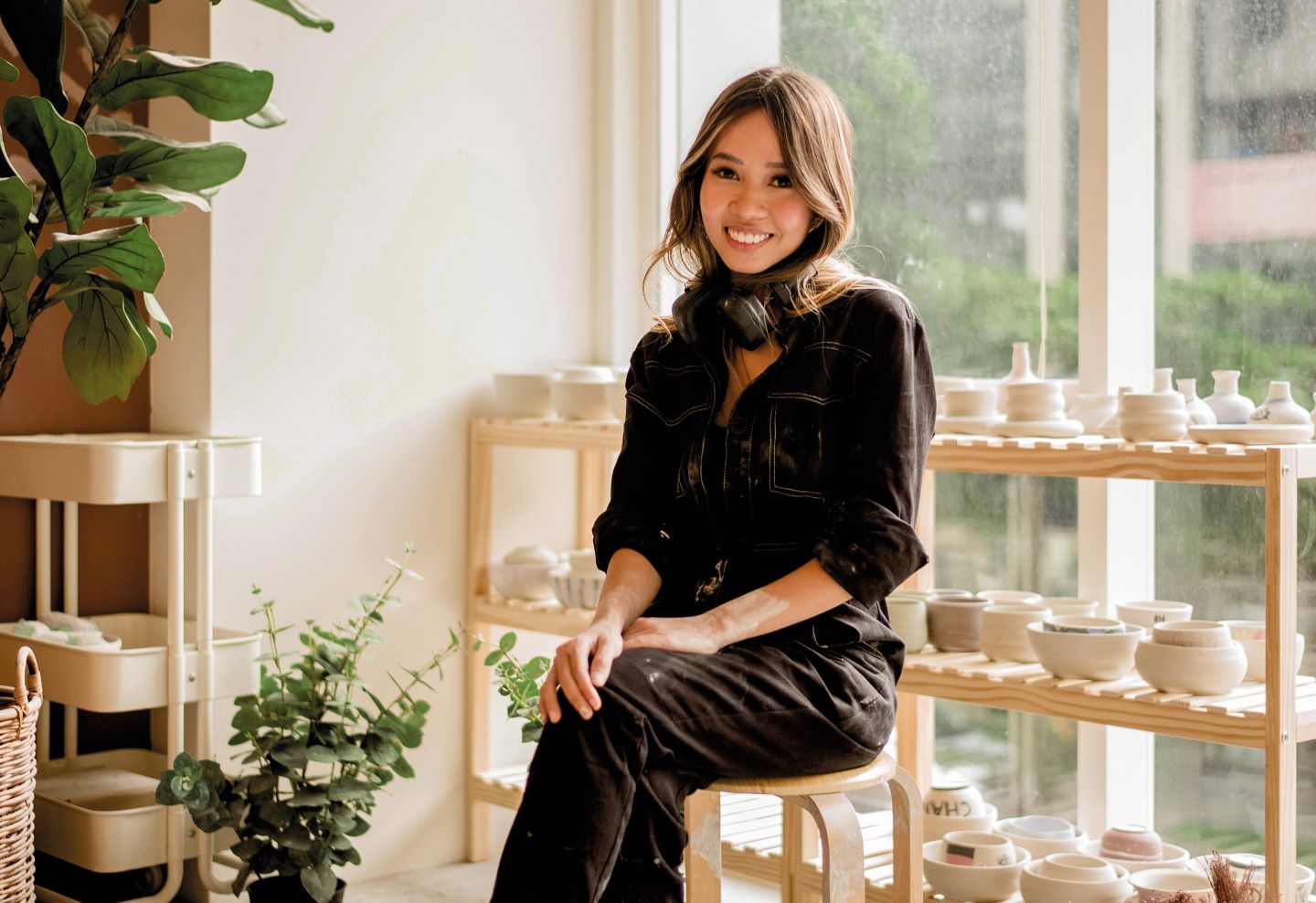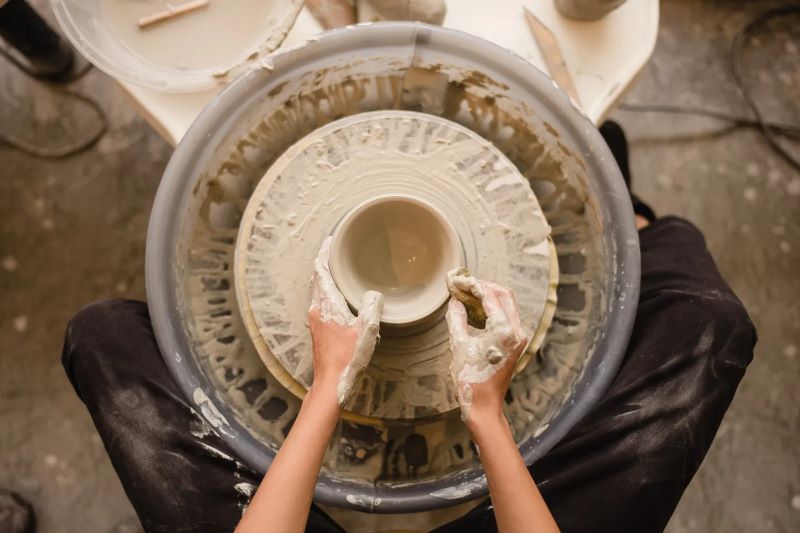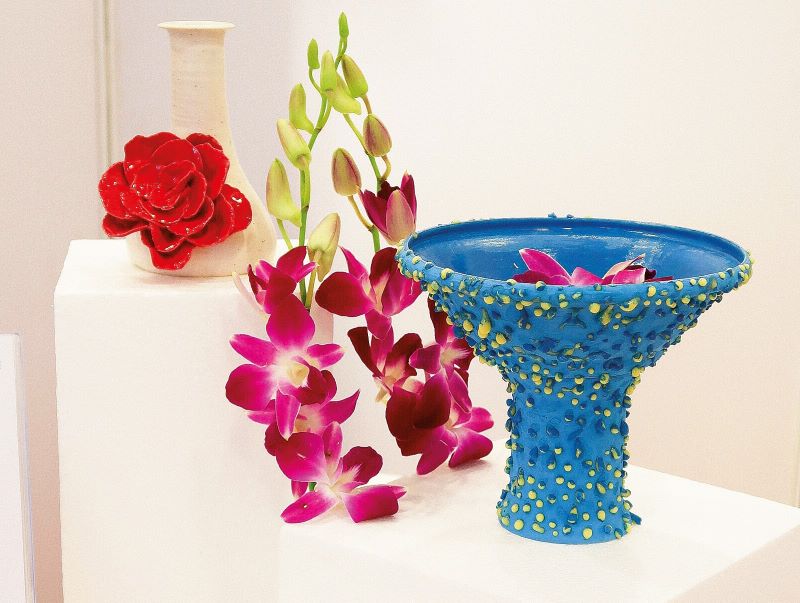
Founder Adriana Danish (All photos: The Pottery Club)
Adriana Danish successfully turned a college hobby into a profitable business, thanks to the pandemic. Back in 2017, she learnt to make pottery using hand-building techniques, but did not enjoy it. “It’s very hard when you don’t have any experience, and trying out a new hobby is always daunting. So I did not pursue it for a while.”
The 26-year-old then enrolled in wheel-throwing classes during the lockdown to expand her technique because ceramic-making was one of the popular activities people delved into while stuck at home. “It was trending like crazy at some point [and] I thought, ‘Hey, I can do that’. After creating a few ceramic pieces, I registered the Instagram account The Pottery Club with the intention of posting my projects and creations. I didn’t really plan to make a business out of it.”
As she produced more pieces for herself and some close friends, online followers began asking if the items were for sale. “When I said no, they [my followers] told me I should sell them because people wanted to buy. At end-December 2021, I launched a website to properly establish the business.” Her first customer was not an acquaintance but somebody who had been following and loving her work.
Adriana begins her ceramic-making process by dumping ideas into a special sketchbook. “Ideas come at odd hours. Sometimes, before I fall asleep, inspiration strikes, so I will grab the book and sketch a drawing only I can understand.”
The next step is to throw clay into any shape she wants for a collection, including mugs, lids, trays, vases and bowls. After the pieces are dried, they will go through a bisque-firing process in a kiln at a temperature of up to 900°C to ensure the fragile items are durable enough to decorate. “A rushed firing process is not advisable as it can cause the pieces to crack or break. Personally, I need about 12 hours to ensure the items are thoroughly dried before moving on to the next stage.”
pottery_1.jpg

The design process for a batch can take up to three days, followed by the final stage — glaze firing. Adriana needs to monitor the process for nine hours, as the glaze requires a certain temperature to ensure the original colours are preserved. If the temperature is too high, the shades may turn grey.
Her products are vivid and vibrant in colour. Where does she look for inspiration to constantly produce attractive designs? “Back then, it was mainly Pinterest. Now, it’s just everywhere. It’s kind of hard to pinpoint. For example, if I see a certain colour combination in nail art, I want to create a mug using that palette. I also draw inspiration from fashion, travelling and nature.”
As Adriana has standards she wants to achieve with product quality, she imports materials from the US and Australia. “I want my pieces to look a certain way, but it is hard to get that with the limited varieties of materials in Malaysia. My production is based in Johor Baru, so I normally just cross over to Singapore to get the necessities.”
Inaccessibility to that and knowledge is one of the reasons people feel discouraged about taking up pottery as a hobby. “Being one of the few makers in Malaysia, it was hard for me to find resources or ask around because not many were doing what I did. I had to do lots of research before I could establish the business.”
As its name suggests, The Pottery Club today allows Adriana to build a community around the world as she can get in touch with those who share the same interest. Having supportive people around “can lighten the physical and mental load that comes with this job”, she says.
img_2823.jpg

As a creator, her concern is not having complete creative freedom as she has to consider what is socially loved and accepted locally when coming up with a product. “That puts a lot of pressure on artists. For instance, Pinterest-inspired mugs are on trend, and people are willing to pay RM250 to RM300 for a single piece. As we are doing business, we have to pay attention to what consumers want.”
But over time, she realised she needed to find her own trademark and style in order to grow. “At the beginning, I took references from the internet, but the process became way too long as I was tied to other people’s creativity.” Now, she has more liberty to do what she likes. Thinking about achieving the same results as other potters is no longer an issue.
The Pottery Club has a fast-growing number of followers on Instagram. Adriana says people like to see her content, which shows the behind-the-scenes aspects of making ceramics. “Some businesses just display the finished products. But customers want to know the people behind a brand — what they look like and how they do their work. This knowledge sort of differentiates the experience of buying a handmade product from a small business and shopping at a mall.”
Joining pop-up markets is always a rewarding experience for the psychology graduate because she gets to communicate with customers who care about her creations. “It is helpful for businesses that want to put their names out there. Some shoppers are more inclined to buy a product after they have seen and touched it.”
Although pop-ups are great for engaging with customers, these events can be demanding and time-consuming. Adriana intends to limit joining such affairs to make space for more creativity and other activities. She will be coming up with an online course on the mereka.io platform next month, designed for those interested in starting a pottery business of their own.
This article first appeared on May 22, 2023 in The Edge Malaysia.


